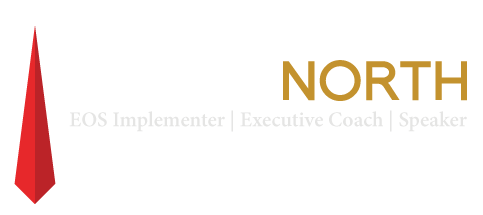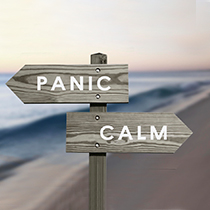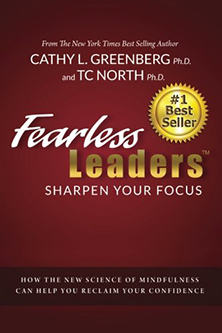Part VI is, you need to do a reality check. How probable is the worst-case scenario?The previous step in this master fear in six steps technique was understanding your worst-case scenario. In order to make peace with your worst-case scenario, you’ll need to do a reality check, which is the fifth step in this technique.
The reality check answers the question, “What is the probability that the worst-case scenario will happen, ranging from zero to 100 percent?”
In this video with speaker agent, Kim Tracy, we discuss how to cope with unacceptable levels of risk. One area not covered in the video concerns doing your reality check from objective reality ― the pure rational part of your brain ― rather than from emotion. If you’re experiencing emotion, typically fear, it will skew your reality.
As always, remember that mastering fear means you know your fears, and you control them rather than letting them control you. Fear is foundational to creating most of your frustration, anxiety and stress, which is why identifying your fears and mastering them is so important. And fear is almost always either the cause or part of the mental and emotional blocks to success.
The “big four fears” are fear of failure, fear of success, fear of rejection and fear of selling. This six-step process might help you if you have fears in any of these areas.
The first four steps in this Six Steps to Master Fear process have been covered in the following videos:
- How to Master Fear Part I: the Big 4 Fears
- How to Master Fear Part II: Identify Your Fears
- How to Master Fear Part III: Embrace Fear
- How to Master Fear Part IV: Disidentify With Fear
- How to Master Fear Part V: Worst-Case Scenario
Here are the first five steps of the six steps to master fear:
- Identify your fears
- Embrace your fears (being afraid to face fear is feeding your fear with fear)
- Disidentify with your fears; they are not you
- Understand your worst-case scenario
- Do a reality check (of the probability of your worst-case scenario coming true)
Do a reality check, and find a way to come to peace with you worst-case scenario. When you do, you’ll feel the fear and anxiety begin to melt away. Enjoy and learn by watching the video below or reading the full transcription.
[vc_video link=”https://youtu.be/4wPGgYTcLYU”]
Kim: I was trying to catch Dr. TC North dancing [which he was doing before I began the recording] as we dive into the six steps to master fear. You can see that TC is rather energetic for us today and is going to recap the big four fears as well as the steps he has already covered.
TC: Thank you Kim. So the big four fears that we’ve been discussing are 1) fear of failure 2) fear of success, the cryptic one 3) fear of rejection and 4) fear of selling which includes, selling products, services, ideas and yourself. Just a reminder, when we talk about mastering fear, it does not mean you will be without fear. It means that the fears you have (both conscious and sub-conscious) you bring to consciousness and now you’re dealing with them, you’re in control of them. You may still have feelings of fear, that’s normal, everyone has fears. But are they in control of you or are you in control of them?
The six step process that we’re involved in is a process to help you become the master of your fears so that you are in control of them. Everybody wants control of their own brains, their own minds, which gives them control of their life.
We have done steps: 1) identify your fear, 2) embrace your fear, 3) dis-identify your fear, and 4) worst case scenario. Step five is what we’re on today and it actually ties in with step four. Step five is, what is the probability that your worst case scenario actually going to happen?
In our two examples from our last video, we had Alice who actually had a really wonderful worst case scenario and it looks like she probably chose it. The other one was with entrepreneurs. If an entrepreneur makes a big, radical strategy and it sets him or her up for failure then maybe that’s not something that entrepreneur is willing to do.
Today’s discussion is about the probability of the worst-case scenario happening. We will use the entrepreneur example. If they change a major strategy what’s the probability that it could take their company under? Let’s say they decide it’s really 50/50. For most entrepreneurs that’s way too high of a risk. That’s an unacceptable risk. You have to identify in that situation what is a level of acceptable risk? Is two to five percent an acceptable risk?
If something has a high probability of taking you to the worst-case scenario, then that is key to changing something so that you minimize the probability. Take it down closer to zero, a more acceptable level. There’s still a probability but it’s an acceptable level of probability. You have to decrease your risk to something that doesn’t keep you focused on the fear, that you’re aware of the possibility but it’s an acceptable level of risk.
One great example that we haven’t ever talked about is my work with Olympic athletes. I’ve done a lot of work with Olympic athletes, and more specifically winter athletes. For the downhill skiers, their worst-case scenario is what?
Kim: Death
TC: Death, yes. Exactly. So how do you stand at the top of a mountain and step to the starting gate with that as your focus? You have to have (a long time ago) come to peace with death being a possibility, severe injury being a reality. These athletes will have a severe injury in their career. It IS going to happen, it’s just whether you can recover from that injury and ski again is the question.
If you’re facing an Olympic run, you may take a higher risk than a non-Olympic run, right? The reward is greater. If I choose a line that’s a faster line, but my probability of wiping out is 30% at the Olympics, it may be a risk worth taking.
In a big event sometimes that’s the right thing. If it’s just important to have a good run, then you want to lower that risk. So the probability is tied to worst case scenario and it’s very important to work with those together and get to an acceptable risk.
And then Kim, you have to be able to set the worst-case scenario off to the side. That’s the important piece here. And this will take us to the next step – what you want to accomplish – and that’s coming up next.
Kim: Excellent TC. Thank you so much. I really appreciate you doing this series with me.
Speaker agent Kim Tracy at the Maxwell James Agency produced this video. Please contact me here if you’re interested in having me deliver a keynote, workshop or webinar on mastering fear. Or contact me here if you would like to discuss personal work with me to resolve your fears.


